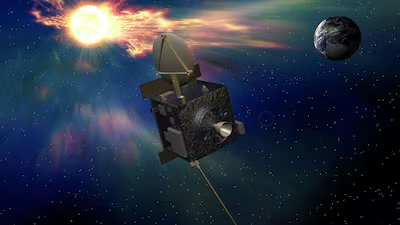
An artist's impression of the space weather forecasting satellite Vigil. PA
An artist's impression of the space weather forecasting satellite Vigil. PA
UK to build Vigil early-warning space weather satellite
Data from the satellite could provide four to five days' notice of solar winds streaming towards Earth

